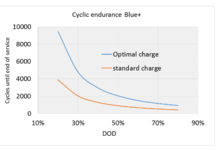jagmanx
Full Member
- Messages
- 3,031
David,
Thanks, and for the additional info
The vehicle is stored inside over the winter.
The storage has clear roofing.
I leave the main control penel switch on
Thus the 120watt solar panel has (thus far) maintained my single leisure battry and Engine battery.
I got a mobile techie to remove the banner battery and install the new pair (politely reminding him of the correct wiring)
Thus my expectation is that all is well.
The manager at the storage facility knows how to check the voltags and does so periodically
With no usage the solar should (?) maintain all batteries above 90%
Thanks, and for the additional info
The vehicle is stored inside over the winter.
The storage has clear roofing.
I leave the main control penel switch on
Thus the 120watt solar panel has (thus far) maintained my single leisure battry and Engine battery.
I got a mobile techie to remove the banner battery and install the new pair (politely reminding him of the correct wiring)
Thus my expectation is that all is well.
The manager at the storage facility knows how to check the voltags and does so periodically
With no usage the solar should (?) maintain all batteries above 90%

